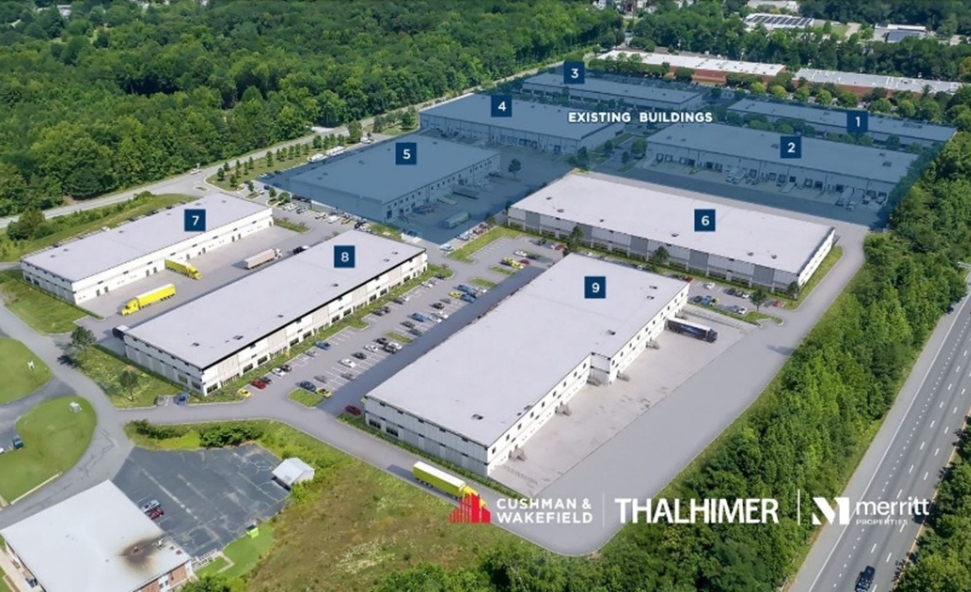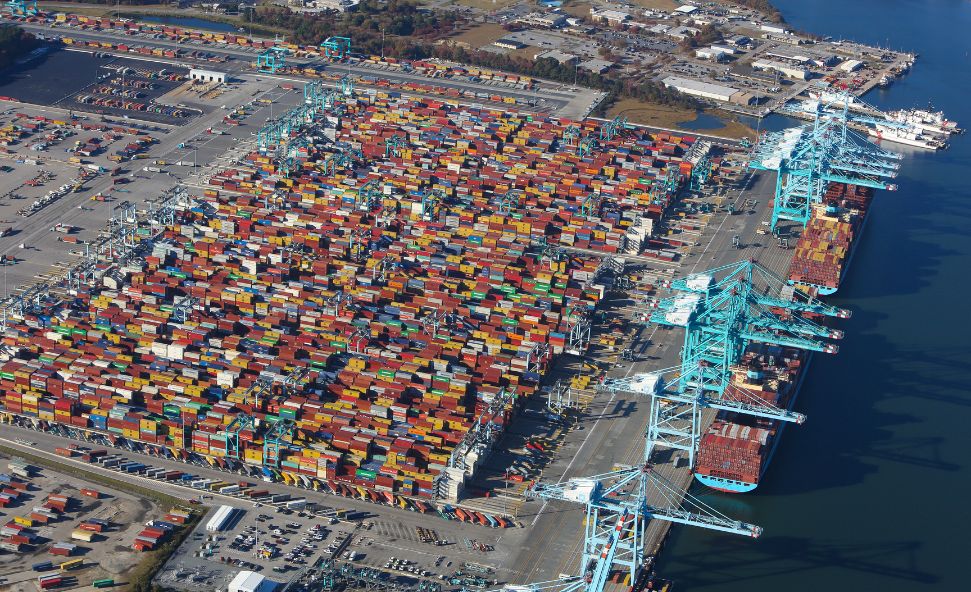
Blog
News | 5 min read
November 6, 2024

NORFOLK, VA (Oct. 29, 2024) — The Port of Virginia® is closer to its goal of eliminating all greenhouse gas emissions by 2040 thanks to a recently announced multi-million-dollar federal grant that will be used to buy electric equipment and the infrastructure needed to support it.
On Tuesday, the U.S. Environmental Protection Agency announced that The Port of Virginia is receiving $380 million from the EPA’s Clean Ports grant program. The grant money will be used to buy and install electric assets and equipment while retiring legacy equipment powered by engines that burn gasoline or diesel fuel.
“This grant is truly transformative for our port and our community,” said Stephen A. Edwards, CEO and executive director of the Virginia Port Authority. “It will make our operations more efficient and sustainable, enhance our capabilities and allow us to continue making strides toward becoming the US East Coast’s first net-zero port.
“This is an investment in the people working at our terminals, who will see first-hand the benefits of this modern, sustainable equipment. Our integrated approach to sustainability and efficiency is designed to advance opportunities for our workforce and our host communities. We are building the US East Coast’s most modern gateway and this is accelerating economic development and workforce enrichment to ensure that Virginia is not just prepared for, but ahead of the future.”
Read more about The Port of Virginia’s sustainability efforts here.
The port’s grant application was supported by US Sens. Mark R. Warner, Tim M. Kaine (both D-VA) and US Rep. Bobby Scott (D-VA-03). On Tuesday the lawmakers issued a joint statement:
“The Port of Virginia is one of the largest and busiest ports on the eastern seaboard, and it’s critical to Virginia’s economy and offshore wind industry. As The Port of Virginia continues to grow, thanks to investments we’re making, we must also ensure we’re reducing greenhouse gas emissions, which result in negative health and environmental impacts for our communities. That’s why we’re thrilled that this federal funding, which was made possible by the Inflation Reduction Act we supported, will accelerate the port’s efforts to achieve net-zero carbon emissions by 2040 and further cement Virginia’s place as a leader in clean energy.”
Using the grant, the port will retire more than 150 pieces of legacy equipment. Most of that equipment is at Norfolk International Terminals (NIT), but there will also be equipment replacement at Richmond Marine Terminal (RMT). Further, the grant will allow the port to forgo renewing the lease for some legacy equipment at RMT. All of the retired units will be replaced with new battery-electric equipment; the old units will be scrapped for recycling.
The list of replacement equipment is extensive and includes specialized cranes for rail operations and container yards, forklifts, shuttle carriers for moving containers, electric locomotives, on-terminal trucks and shuttle buses for safely moving people to and from work areas. Additionally, the grant will be used to further develop the port’s battery charging infrastructure and energy storage for expanding zero-emissions operations at NIT and RMT.
The retirement of carbon-fuel-burning engines will reduce mobile source pollution in communities close to the port’s terminals. Edwards said the port is committed to being a responsible neighbor in its host communities. “By reducing mobile source pollution and moving forward on our sustainability goals, we will continue to protect and advance the communities where we live and operate.”
Edwards acknowledged the federal and local support of the port’s grant application throughout the process.
“Our leadership in Washington [DC] has been instrumental in moving our application forward and we owe them our thanks. We are also appreciative of the support of our partners at the US Coast Guard [Sector Virginia] and the state and local authorities in Virginia and Hampton Roads. And, it is important to recognize the EPA’s Clean Ports Grant program, which is helping to open the door to a cleaner future for US ports.”
The Port of Virginia’s Clean Ports Program grant is a transformative step toward achieving a cleaner, more sustainable future for the community, said Speaker Don Scott, Virginia House of Delegates, 88th District, Portsmouth.
“This funding will not only accelerate the port’s goal of reaching net-zero carbon emissions but will also advance essential workforce training and create a healthier environment for nearby communities,” Scott said. “By equipping our terminals with zero-emission infrastructure, we’re setting a new standard for ports across the country and making a lasting investment in the wellbeing of our Commonwealth and the nation. I am proud to support this initiative that aligns environmental stewardship with economic growth.”
###
The Virginia Port Authority (VPA) is a political subdivision of the Commonwealth of Virginia. The VPA owns and through its private operating subsidiary, Virginia International Terminals, LLC (VIT), operates four general cargo facilities Norfolk International Terminals, Portsmouth Marine Terminal, Newport News Marine Terminal and the Virginia Inland Port in Warren County. The VPA leases Virginia International Gateway and Richmond Marine Terminal. An economic impact study from The College of William and Mary shows that The Port of Virginia is a driver of more than 565,000 jobs and $63 billion in Virginia gross domestic product on an annual basis.